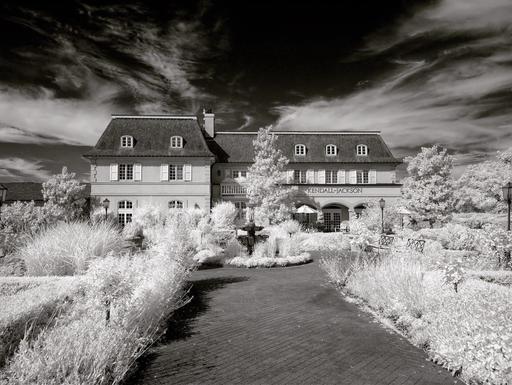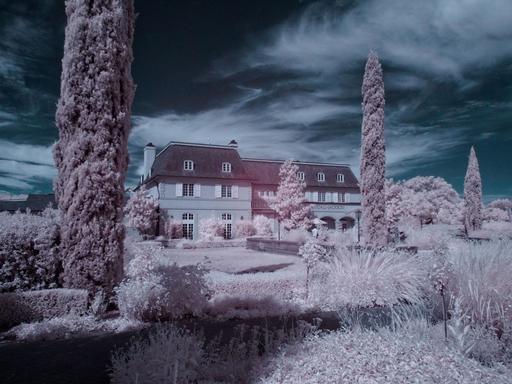Summer can be challenging for outdoor photographers. In addition to being hot outside, the light is contrasty and difficult to tame, except on the edges of the day - not exactly the perfect conditions to get your artistic mojo in gear.
 Kendall Jackson Winery in Santa Rosa, CA captured in infrared black & white. Photos by Derrick Story.
Kendall Jackson Winery in Santa Rosa, CA captured in infrared black & white. Photos by Derrick Story.
One solution that I've discovered is infrared photography. Instead of working with the visible light spectrum, I concentrate on slices of the IR spectrum. For example, the two images in this article were captured at 720nm.
The beauty of IR photography is that it thrives at times when normally we have to pack away our cameras and head for air-conditioned refuge. If you shoot with a mirrorless camera, especially one that's been modified for IR, the scene you view in the electronic viewfinder will look very different than what you witness with just your eyes.
The sky darkens, clouds jump forward, and the foilage becomes bright and detailed. Many photographers start with B&W infrared and over time begin to experiment with color work. If you shoot in RAW, the file can be interpreted in many different ways.
 Color version of the same location, also captured with a 720nm filter.
Color version of the same location, also captured with a 720nm filter.
To start experimenting with IR, all you need is a 720nm filter and a camera with some infrared sensitivity. You can test that by switching to live view and pointing a TV remote at the lens. When you push a button on the remote, a white dot should appear on the LCD. That means the camera can "see" IR.
The 720nm filter is very dense. So you'll want to increase the ISO to 1600 or 3200 and use the electronic viewfinder of your mirrorless camera for composing. You'll also want to change your White Balance setting to Custom and take a reading off green foilage like grass. This makes a huge difference in the quality of the file.
Starting with your existing camera and a 720nm filter will give you a taste of this new world. But there's lots more to explore. And photographers who take a liking to IR usually end up buying a modified camera because the entire process becomes easier.
If you want to learn more about infrared photography and peruse some cool gear for it, I recommend visiting the Kolari website. They have everything you'll need to beat the summer heat... at least photographically speaking.











